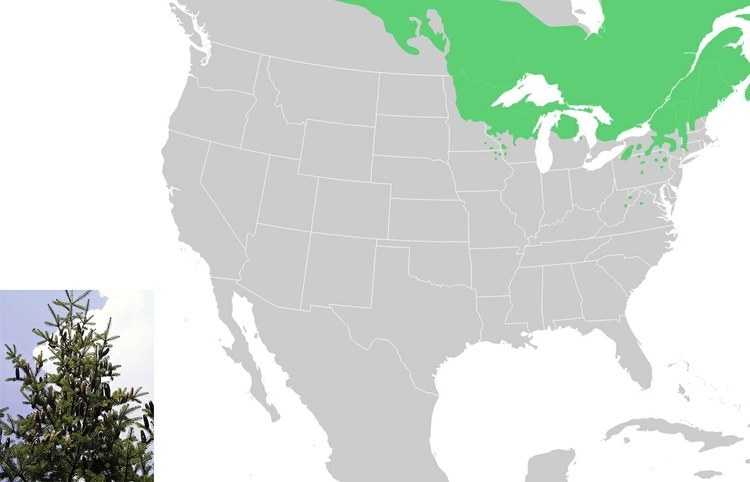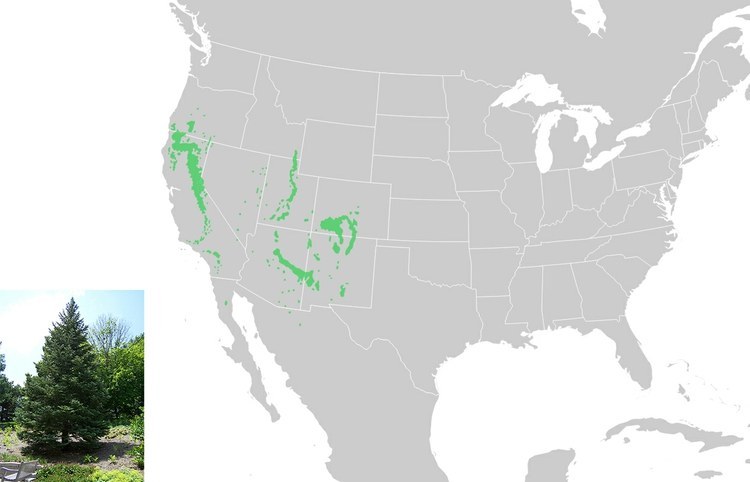
If the idea of wandering among thousands of Christmas trees, growing wild in their natural habitat, appeals more than staring at a farmed, felled specimen, BuzzFeed News has you covered. We’ve plotted the natural distributions of nine native U.S. species, voted in this online poll as the most popular Christmas tree choices.
Douglas Fir

Named for the Scottish botanist David Douglas, this western giant can grow to 250 feet tall if left to its own devices. Its needles give off a sweet fragrance when crushed. But it’s not actually a fir tree, belonging to a different genus.
Fraser Fir

This is a true fir, named for John Fraser, another Scottish botanist. It retains its needles well, so it’s popular as a Christmas tree. But unless you’re heading for the southern Appalachian mountains, you’re unlikely to see one in the wild.
Colorado Blue Spruce

Among the most Christmassy-looking of the commercial Christmas trees, this is the official state tree of Colorado. Not so fragrant as its competitors, and with bluish needles, you can easily spot it growing wild in the Rocky mountains.
Balsam Fir

Similar to the Fraser fir, but much more widely distributed, mostly across eastern Canada and in the northeastern U.S. The resin that gives this tree its name is used to make Canada balsam, which dries clear and is used as a glue for glass.
White Pine

This is the largest native pine in the U.S., growing to 80 feet or more. White pine forests once covered much of the northeastern U.S., but were heavily logged from the 18th century onwards. Head to the Great Smoky Mountains National Park to wander in old-growth stands.
White Spruce

This conical tree, popular as an ornamental, is mostly found in Canada. Its range extends farther north than any other tree in North America. There’s also an isolated population in the Black Hills of South Dakota, where it’s the official state tree.
Eastern Redcedar

Widely distributed across the eastern U.S, this is actually a type of juniper, rather than a true cedar. It grows slowly, often on prairies, and is one of the first trees to repopulate land that has been cleared of its natural vegetation.
Virginia Pine

This is the most popular Christmas tree in the South, and can be found growing in the wild from Long Island, through the Appalachian Mountains, and down to Alabama. Woodpeckers make their nest holes in older trees, taking advantage of softened wood caused by fungal diseases.
White Fir

Also known as the concolor fir, this tree is found on mountains in the West, including the Rockies and California’s Sierra Nevada. It can be severely damaged by parasitic mistletoe — call it nature’s Christmas civil war.
Scotch Pine

This is the interloper. The Scotch pine is the most commonly grown Christmas tree in the U.S., but you won’t find natural forests in the wild. As the name suggests, it was introduced to North America for commercial forestry. Its natural distribution runs from western Europe to eastern Siberia.
All together now...

Here are the distributions of all those Christmas trees, laid over the top of one another. Enjoy the great outdoors, and see here for more information on Christmas tree species.
